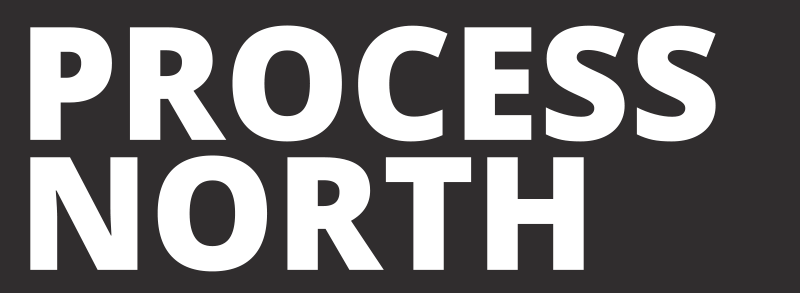Under the radars
Helena Desivilya Syna and Geoffrey Corry, editors, Track III Actions: Transforming protracted political conflicts from the bottom up, De Gruyter, Berlin, 2023, pp xiii and 264.
Reviewed by Mike Makin-Waite
This book is the second in an already-useful and important series from De Gruyter on ‘emerging trends in conflict management’ (the first book in the series, about conflict ‘online’, is reviewed here). Mari Fitzduff’s foreword clarifies the meaning of ‘Track III peacebuilding’ by distinguishing it from ‘Track I’, in which ‘political and military power holders … engage in bargaining about the nature of any end agreements and Track II [which] involves non-governmental contacts and activities between private citizens assisting in the development of Track I activities’ (a recent review here discussed examples of the hybrid / transversal case where private citizens engage with political and military power holders who may be involved in Track I work).
‘Track III’ denotes the ‘bottom-up’ initiatives developed by grassroots leaders, civil society agencies, families and neighbourhood organisations (formal and informal). Such ‘direct participation by “ordinary everyday people” … can significantly help the birth and sustainability of peace agreements … because they can usually move more freely under public and media radars than known power brokers’ and ‘assist the development of dialogues and vocabularies’, perhaps bringing in ‘the leverage of … trade unions, faith groups, business people, academics and community groups to bear upon the successful development and delivery of any agreements’.
A short overview chapter by the editors includes points about the value of ‘Track III’ in ‘multi-modal and multi-level … conflict transformation’ so as to assist ‘the diverse parties to uncover the latent intricacy of confronting “otherness”’. This can ‘entail divulging elusive signs of delegitimisation, discrimination, exclusion and silencing of voices’ and be complemented by training and skill-sharing work to build peoples’ capacity and confidence to initiate and develop positive problem-solving approaches.
The first part of the book then brings together pieces on conflict transformation work which has been taking place ‘from below’ during the ‘post-armed conflict phase in Northern Ireland’. Geoffrey Corry analyses ‘the fault line’ which has generated binary divisions and polarisation. He understands this fault line as being formed of five ‘layers’, comprising of issues around land and place; religion; nation; collective narrative; and patterns of local segregation. Avila Kilmurray asserts the importance of ‘shift[ing] power to local-based groups and local ownership’. Sean Brennan’s stimulating but unsettling (stimulating because unsettling?) piece raises troubling questions about whether the current situation in Northern Ireland is a ‘violent peace’, a ‘frozen conflict’ rather than a ‘positive peace’, with major challenges ahead because of coming (present?) catastrophic climate breakdown and the current dominance of neoliberal economic arrangements.
This reviewer particularly valued the ‘case study’ contributions by the late Brendan McAllister and by Michael Doherty (disclosure: this reviewer became a mediator by participating in a programme led by McAllister, and is a member of an informal peer-support ‘peacebuilders network’ alongside Doherty and a number of other colleagues across the UK and Ireland). Their thoughtful descriptions of ‘insider mediation of contentious parading’ set out the complex modulations which shaped ‘conflict transformation’ and ‘safe dialogue’ processes around parades by the Orange Order in Portadown and by the Apprentice Boys in Derry / Londonderry. McAllister details a model for addressing inter-communal disputes when ‘parties are not willing to sit down face-to-face to listen to each other and work through a process of understanding … core issues together’.
From 1995, the Drumcree Church of Ireland parish church on the outskirts of Portadown became the centre of inter-communal tension between members of the Orange Order and local Catholic residents: ‘one of the most difficult and intractable conflicts of the entire Troubles’. Taking account of the fact that ‘insider partial’ mediators ‘must overcome external perceptions that they are biased’, McAllister (who was Catholic) co-mediated with a Protestant (Presbyterian) colleague. He sets out how the issues were seen by people on ‘both sides’, displaying the care and sensitivity that was characteristic of his practice in his description of the factors and feelings of the different parties.
Carrying out his first assessment of the issues in 1995, McAllister judged ‘that the conflict was not amenable to mediation at that time’. Nevertheless, as a large-scale and dangerous stand-off developed over the question of whether the Orangemen could walk their traditional route, McAllister and his colleague Joe Campbell were asked by the police to attempt to meditate between the sides: the resulting ‘inter-mediation’ saw the mediators acting as ‘go-betweens’, bringing information from one party to another, facilitating separate discussions and assisting communication between the parties.
McAllister shares some of the techniques he found effective: ‘the mediator needs to pay attention to the language [the parties] use and the language of any messages or communication that they may be entrusted to carry. There is a need to frame or reframe words and messages using “pregnant language” [which is] true to the intention of each party [and] also carries the potential of new life and creativity for the conflict’.
But he acknowledges that he and his colleagues faced significant difficulties: for example, at a certain point, the residents’ group became sceptical about the mediators (‘naturally’, says McAllister, given certain unfortunate developments which he details) and began ‘viewing us as – wittingly or unwittingly – assisting the police agenda’. Such situations are ones which mediators must recover from in order to be effective, and McAllister and Campbell worked hard to do so. Whether they conceive of themselves as ‘independent’, ‘neutral’, ‘impartial’ or ‘multi-partial’, mediators’ scope to operate depends on the extent to which they can be trusted by different parties to a dispute. One of McAllister’s practices, therefore, was that whenever his organisation accepted a contract, for example, from a government agency or public body, he made clear that this did not mean that they were therefore taking on the job of promoting that agency’s ‘agenda’: as mediators, their usefulness to the agency – as well as to others, including those who may be opposing the agency’s agenda – lay in this not being the case.
It is typical of McAllister that his piece includes only modest acknowledgements of ways in which he and his colleagues made a helpful contribution across the years that Drumcree was a ‘hot’ issue (it continues to be a focus of strong feelings and divisive disagreements). Instead, across these very valuable pages, McAllister shares what he learned about ‘the difficulties of mediation’ and ‘the complexity of the Drumcree conflict’.
Doherty’s case study describes the emergence of ‘what became known as the “Derry Model” to resolve historic problems over traditional parades’. From 1998, he worked with the Authorised Officers Unit of the Northern Ireland Parades Commission, which involved carrying out ‘shuttle mediation’ between the (Protestant / Unionist) Apprentice Boys of Derry and the (predominantly Catholic and Nationalist) Bogside Residents Group: ‘there would be no face-to-face meetings but … both groups wanted a peaceful settlement to parading issues’. The process was underpinned by mutually agreed ground rules – and benefited from a ‘media blackout’ so that the questions and issues being explored through the mediation were not reported (much less tweeted or posted!) by any party whilst the process was live.
Significant developments included the emergence of partnership working between civic leaders and the establishment of a mobile phone network that included the Loyal Orders, ‘community leaders from across the sectarian divide’, central and local government officials and the police.
Work aimed at ‘reducing sectarianism and hate at the grassroots’ is showcased in a chapter which editor Geoffrey Corry introduces by succinctly discussing the challenges in defining ‘sectarianism’: the examples include Shona Bell on the history and work of the Corrymeela Community and Seán Byers of Trademark Belfast on the work of trade unions and trades councils in opposing ‘sectarian violence’. Byers notes with justified pride that ‘not only did the labour movement manage to avoid a major split along ethno-national lines – a remarkable feat in the circumstances [of the Troubles] – but functioned more positively as a force for campaigning and mobilisation around class interests’. There are also chapters detailing examples of inter-communal dialogue; projects centred on women’s’ experiences during the conflict; and Corry’s own piece on the Glencree Centre, where he works, detailing the important workshops which have taken place there, bringing together victims of violence and former combatants.
The second part of the book carries comparable material on ‘Track III initiatives in the context of Israel’s divided society and the protracted Israeli-Palestinian political conflict’. This reviewer feels (even) less qualified to assess and discuss these chapters than they do the material on Northern Ireland: nevertheless, it is clear that the various chapters (detailing a 1995 visit to Northern Ireland by ‘Israeli Jewish and Palestinian co-existence activists’; the challenges of facilitating intergroup dialogue and seminars in universities and colleges; a training programme for ‘Jewish and Arab change-agents’ in a district of Israel; and other initiatives) incorporate many examples of well-considered good practice.
Linda Jakob Sadeh’s closing chapter relates the work which she discusses to a thoughtful discussion of ‘intergroup contact’: this is most helpful, as overly simplistic notions of ‘contact theory’ can trip up peacebuilders’ attempts to take positive steps in conflicted situations. Jakob Sadeh contrasts ‘models [which] understand contact as a means to create a common identity’ with the more complex models which she favours. These emphasise ‘differentiation between identities, and the responsibility of each side in the shared context’, acknowledging ‘the conflict that arises between the sides as a source for learning’. Her chapter takes account of the importance of the emotions and power dynamics which shape peoples’ lived experience, and which need to be addressed in a range of ways and over a significant period of time. Such important aspects of how peoples’ current relationships are structured, understood and felt cannot be ‘short-circuited’, much less ignored. They need to be addressed and handled well if positive outcomes are to result from conflict resolution initiatives which bring people into contact with those who they regard as ‘other’.
Nearly all the book’s chapters cover initiatives which took place more or less entirely within the specific relevant territory, involving people who were almost all ‘local’ actors, both in Northern Ireland and, as Fitzduff notes in her foreword, ‘between Arabs and Jews who are all citizens of Israel’. This does not in any way take away from the value of the book, but it is worth reiterating that in these conflicts, and others, many of the co-ordinates, pressures, drivers and agendas which shape the dynamics of violence and resolution are not only generated from within the particular place where the trouble is happening, but by structuring agents and powers who are based (and often focussed) elsewhere – and not only in adjacent territories in relation to which there may be border disputes.
In training sessions that I attended, McAllister illustrated this point by describing the areas where conflict was actually happening and being experienced as ‘the fault lines’. Developing the seismological metaphor, he reminded us that fault lines are the unfortunate places where much bigger ‘tectonic plates’ rub up against each other, sometimes shifting and collapsing.
Alongside Track I, Track II and Track II, we can perhaps therefore ask what Tracks we need so that those who wish to build peace in their communities can engage with those people, elsewhere, whose lifestyles, politics, historically-formed privileges and economic interests are primarily responsible for building up structural pressures of inequality and oppression across the social ‘tectonic plates’ which can then force the fault lines felt in such locales as the ‘peace lines’ of Belfast, the Gaza Strip and the Golan Heights, the banlieue of Nanterre and the currently ruined villages of the Donbas.
Review published July 2023.


